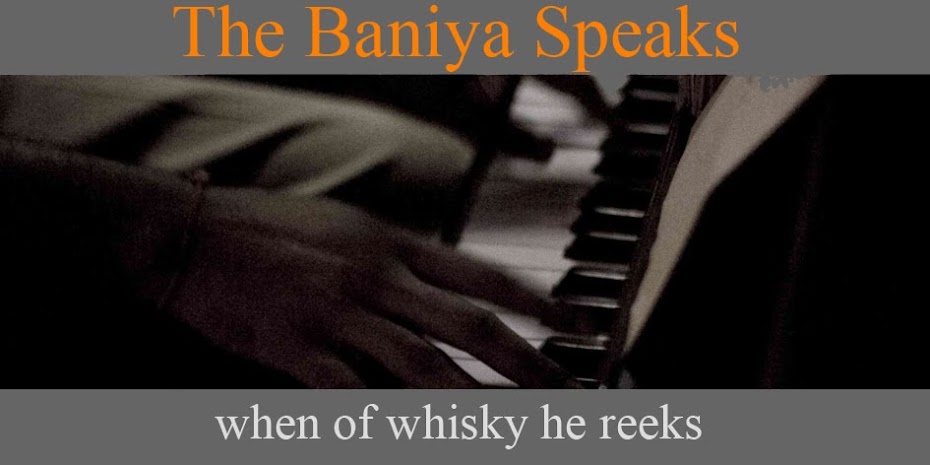Today, I'm going to tell you how I take a piece of music I don't particularly like, break it into components and thus appreciate its nuances (or pelvic thrusts, depends on the philosophical plane of the music)
First the recipe, then I'll explain why it works. (you still need a mildly discerning ear for this, or the ability to concentrate and focus)
The secret recipe to awesome music listening:
Ingredients:
a) 1 6' x 4' or larger sofa / bed with sufficient cushioning
b) 1 awesome set of comfortable headphones (Bose QC 2 for the haves) or a serenely quiet room with good speakers
c) Lightless-ness. a complete absence of light. Remember, we need to accommodate the vegans.
d) 30-40 minutes of time
e) A hi fidelity recording of the piece. Do try to avoid playing the track in question on youtube
f) A relaxed and positive demeanor. Remember, this can sometimes be frustrating.
Method:
Slip in the cd/lp or whatever medium the song is on and grab the remote. Try to use level equalization. Not too loud, but it should be all you hear and make sure that the bass or top isnt turned up too much, we need to hear everything clearly.
Look at the eq in the picture. Its not a bad general setting for good speakers. Keeps the bass from booming and the high notes from becoming shrill. Also, most of the melodic sound is in the mid band, which gets a slight nudge.
Look around your room, remember where the tables are, because now you've got to turn off the lights and plop onto the sofa/bed.
Play the track once. Listen to it like you would normally listen to music. (Im assuming I dont NEED to tell you to put on the headphones if thats your chosen medium of delivery, but hey, PUT THEM ON)
First repeat:
Here is where you need both patience and a decent ear. You have to listen to this track around 4-5 times. With every repeat, single out and listen to only one element at a time.
For example:
a) For the first enlightened listen, try to ignore everything but the drums and percussion. Concentrate. Really try to pick out every cymbal hit and ghost note. Do like Arjuna did with the bird and focus, ignoring everything else.
b) Next repeat, target the bass. figure out what the bloke is trying to do. Picture him playing his lines, on stage, alone, just for you
Depending on what you are listening to, pick out the instruments or sections (like the horn sections of a big band) and listen to them individually. Make sure you dont lose your focus.
Finally, after you've heard 5 different tracks played by entirely different instruments, all claiming to be the same, listen to the whole thing with completely open ears. I promise you, you'll hear a sound unlike anything you've heard from that particular song.
The Baniyas science:
The four essential components of music, the very basic, can be broken into Melody, Harmony, Rhythm and Bass.
What we essentially did, in this exercise is to isolate each and listen to them. Also, if there were several instruments playing different harmonies and melodies at the same time, we gave our ears time to identify them individually so that we can make some sense of them put together. Capiche?
My favorite way to look at a piece of music is to compare it to a painting. Since its easier to perceive minute differences with eyes (mostly due to the practice they get), there are some direct relationships between art and music that made a lot of sense to me.
The melody, is like the the lines of a painting, defining form and structure and the basic tone of the piece.
The harmony, is like the colors of the painting, that give it flavor. Changing the color/harmony can completely change the mood of a piece (of either art or music).
A good example to understand the aspect of melody is to listen to Bach's Cello suite no 1 in G major part 1: Praeludium. Its just a melody, but an extraordinarily beautiful one. Follow the recipe and listen to it! I've seen people buckle before the beauty of this song, people who you'd think would stab you if you exposed them to anything that can be construed as culture!
For harmony, the mass connect is easier. Listen to some songs from an album by Paul Anka called Rock Swings. He's basically rearranged some famous pop rock tunes. Which means, he's kept the melody and played around with the rest... the color. listen to them side by side with the originals and see the difference, and dont forget to use my recipe :)


So imaginative you are, doing the whole recipe thing.
ReplyDeleteSince its easier to perceive minute differences with eyes (mostly due to the practice they get), there are some direct relationships between art and music that made a lot of sense to me.
Sweet. Never thought of it like that. Yes, capiche.
@Nimpipi: Thank you kindly. Are you going to try this? Let me know how it goes :)
ReplyDelete